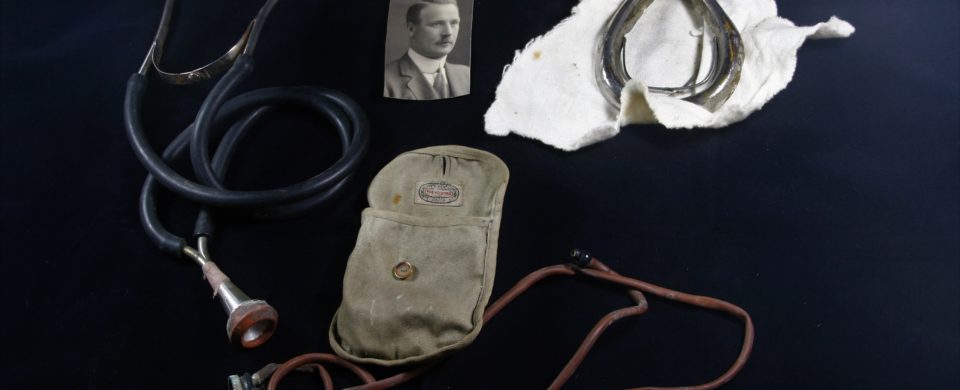Medical collection of Dr J Dunbar of 6th Battalion, The Royal Scots Fusiliers,
For some WWI soldiers, the thought of a short stay at a field hospital might seem like a a welcome holiday. After all, in comparison with the harsh environment of trench warfare, the beds and tents of that temporary home must have seemed like a haven of peace in the midst of a maelstrom. Not to mention that convalescence quite often included entertainment ranging from amateur dramatics to musical concerts. They might even describe it as the next best place to being home – in the warm, out of the rain and mud.
However, for the many Medical Officers (MO) like Dr J Dunbar of 6th Battalion, The Royal Scots Fusiliers, those tents were his battlefield and far from restful or peaceful! Even amid the changes in medicine through the decades, this reality for medical staff in the military was nothing new.
It was possibly the realistic and unadulterated journalism of William H Russell, ‘Special Correspondence’ of The Times, during the Crimean and Boer wars of the 19th century, that began to educate the British public about the reality of the life of a British soldier – this growing awareness ensured that the well-being of their soldiers became more of a priority to the Army. Planning for medical support became part of military strategy and enhanced hygiene was possibly the most important of all the improvements and would save the lives of many soldiers. The Royal Warrant of 1898 granted MOs substantive military rank and limited powers of command; and the reputation and status of medical officers improved steadily throughout the ensuing campaigns leading up to WWI.
Dr Dunbar worked in a Field Hospital, which typically in WWI, was a small mobile medical unit or mini hospital that temporarily took care of casualties on-site before they could be transported to more permanent hospital facility if appropriate. Typically, it could accommodate 500-1,000 patients, with seven MOs, including the Commanding Officer and a surgical special, as well as supporting nursing staff – by 1915, these units had become more stationary, often located at the junction of the collecting and evacuation zones.
After the War, Dr Dunbar presented the equipment that he had used during his work in the Army to the Museum; and it is one of the most interesting exhibits to be found in the Under Fire case, number 3. The collection includes two stethoscopes, chloride, sutures, silkworm gut, syringes, needles, First Field Dressing and Sphagnum Moss. The medical officers worked long hours in extremely difficult and hard conditions – it is certain that no soldiers saved by one of these dedicated men could fail to have a deep respect and gratitude for their dedication and expertise.
Pleas check us out on our facebook and instagram.










